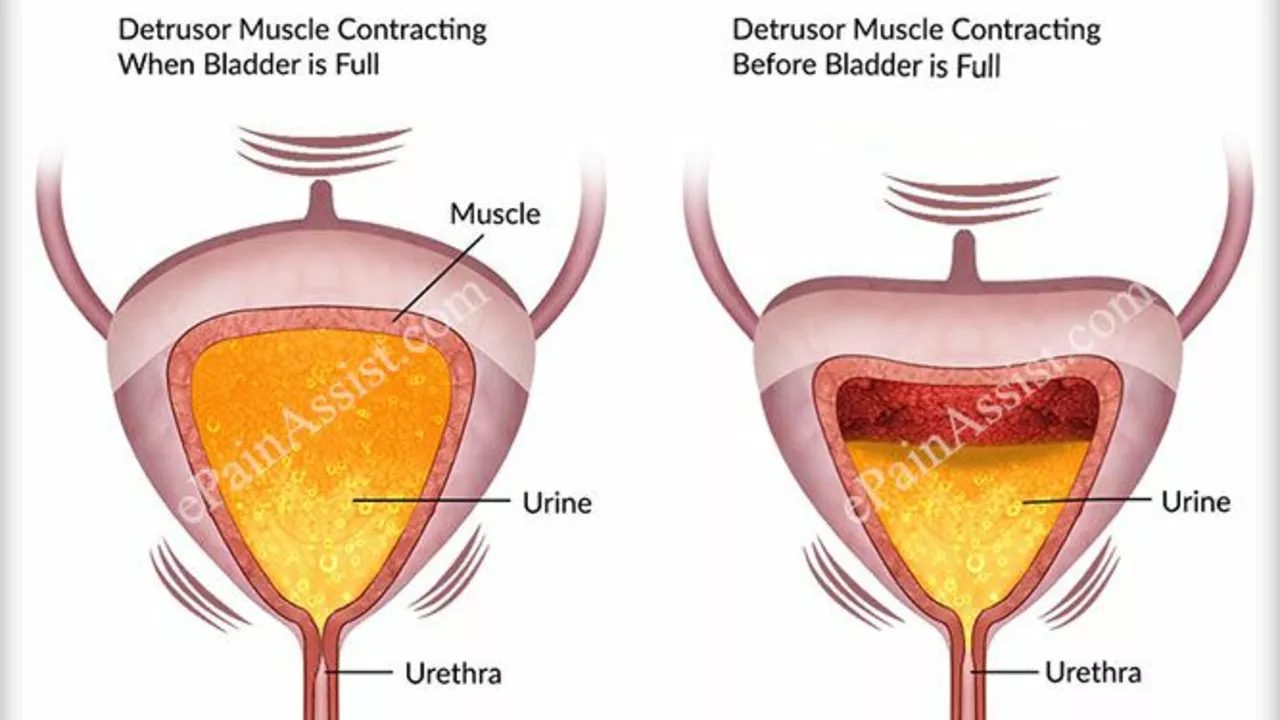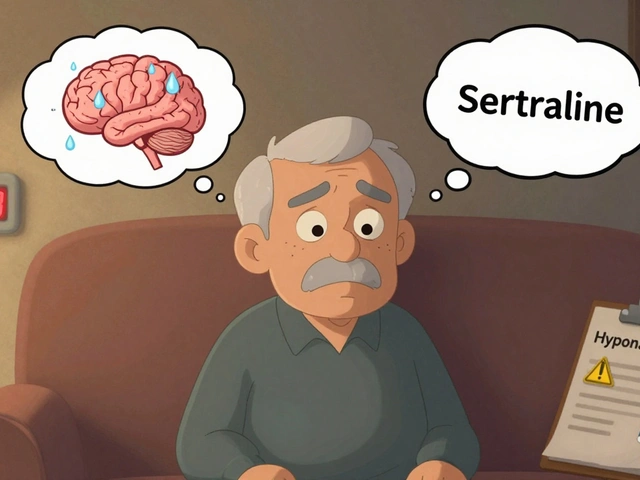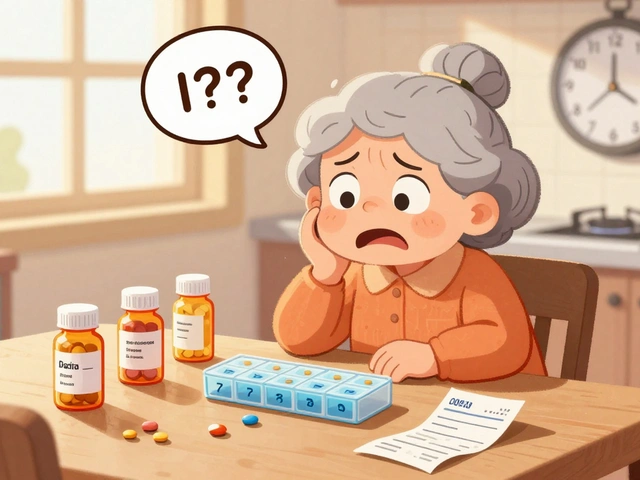The impact of bladder and urinary incontinence symptoms on exercise and physical activity

Understanding Bladder and Urinary Incontinence
Before diving into the impact of bladder and urinary incontinence on exercise and physical activity, it is essential to understand what these conditions are. Bladder incontinence refers to the involuntary leakage of urine, while urinary incontinence is the general term for the inability to control one's bladder. There are different types of urinary incontinence, such as stress incontinence, urge incontinence, and overflow incontinence. All of these can significantly affect a person's daily life, including their ability to engage in physical activities and exercise.
The Psychological Impact of Incontinence on Exercise
One of the major ways in which bladder and urinary incontinence symptoms impact exercise and physical activity is through their psychological effects. People with incontinence often feel embarrassed, self-conscious, and anxious about the possibility of leaking urine during exercise. This can lead to a fear of participating in physical activities, particularly those that involve social interaction or public spaces. As a result, individuals with incontinence may avoid exercise altogether, which can have serious consequences for their overall health and well-being.
How Incontinence Affects Exercise Choice
Incontinence can significantly impact the types of exercises and physical activities that individuals feel comfortable participating in. High-impact exercises, such as running, jumping, and aerobics, can exacerbate incontinence symptoms and increase the risk of urine leakage. Consequently, people with incontinence may be more inclined to choose low-impact activities, like walking or swimming, which are less likely to cause leakage. This can limit the variety and intensity of workouts, potentially hindering progress towards fitness goals.
Managing Incontinence During Exercise
While bladder and urinary incontinence symptoms can pose challenges for individuals wanting to engage in exercise and physical activity, there are ways to manage these symptoms and still maintain an active lifestyle. Wearing absorbent products like pads or specialized athletic underwear can help provide a sense of security and confidence during workouts. Additionally, planning exercise sessions around bathroom breaks and knowing the location of restrooms at workout facilities can help minimize anxiety related to incontinence.
Exercises That Can Improve Incontinence
Interestingly, certain exercises may help improve bladder and urinary incontinence symptoms. Pelvic floor exercises, like Kegels, can strengthen the muscles that support the bladder and urethra, helping to improve bladder control. Regularly practicing these exercises may help reduce the severity and frequency of incontinence episodes, making physical activity more enjoyable and less stressful.
Consulting with Healthcare Professionals
It is important for individuals with bladder and urinary incontinence symptoms to consult with healthcare professionals before beginning an exercise routine. Doctors, physical therapists, and other specialists can provide valuable guidance on which activities are appropriate and safe, as well as recommend strategies for managing incontinence during exercise. They may also be able to suggest treatments or interventions that can help improve symptoms, making it easier to engage in physical activities.
The Importance of Staying Active Despite Incontinence
Although bladder and urinary incontinence symptoms can make exercise and physical activity more challenging, it is crucial for individuals with these conditions to stay active. Regular exercise has numerous benefits for physical and mental health, including improved cardiovascular fitness, increased muscle strength, better mood, and a reduced risk of chronic diseases. By finding ways to manage incontinence symptoms and work around limitations, individuals can continue to reap the rewards of an active lifestyle.
Conclusion
In conclusion, bladder and urinary incontinence symptoms can have a significant impact on exercise and physical activity. However, with the right strategies and support, individuals can manage these symptoms and continue to participate in physical activities that benefit their overall health and well-being. By understanding the challenges associated with incontinence and seeking professional guidance, individuals can find ways to maintain an active lifestyle and improve their quality of life.
17 Comments
Kelvin Murigi
Great overview! The article nails the fact that anxiety around leakage can actually deter people from even stepping into a gym. I’d add that pelvic floor physiotherapy, when combined with regular cardio, can dramatically improve outcomes. Also, using moisture‑wicking athletic underwear isn't just about comfort-it can boost confidence, which in turn encourages more consistent training. If you’re starting out, try low‑impact classes like yoga or water aerobics, then gradually introduce higher impact moves as your control improves. Remember, consistency beats intensity when building bladder strength.
ahmad matt
Honestly, this sounds like a lazy excuse to avoid hard work. People just need to toughen up, stop worrying about a little wetness, and push through. If you can’t handle a few splashes, maybe the gym isn’t for you. The article is fluff; real athletes don’t quit because of a tiny inconvenience.
kristine ayroso
Whoa, chill out. It’s not about being "tough" – it’s about health and dignity. Many folks truly fear public embarrassment, and that’s a legit barrier. Coaching can include practical tips: schedule bathroom breaks, wear proper gear, and practice pelvic floor drills. Empowering people, not shaming them, builds a stronger community. So, let’s keep the vibe supportive and solution‑focused.
Ben Small
Love the idea of mixing in fun activities! If you’re scared of running, try a dance class-lots of movement but lower impact on the pelvis. Keep the heart rate up, burn calories, and stay motivated. Consistency is key, and finding something you actually enjoy makes the whole process easier.
Dylan Hilton
Quick tip: double‑check the spelling of "pelvic" and "incontinence" before you post. Small errors can distract readers from the valuable advice you’re sharing. Keep the content sharp!
Christian Andrabado
Take a break, drink water.
Chidi Anslem
In many cultures, bodily functions are treated with a certain level of openness, which can reduce the shame associated with incontinence. Yet, modern Western societies often privatize these experiences, making individuals feel isolated. The psychological impact that the article mentions is not merely about embarrassment; it ties into identity, self‑esteem, and social participation. When someone fears leakage during a group class, they may withdraw, missing out on the communal benefits of exercise, such as social support and increased motivation. Moreover, the stress response triggered by fear can exacerbate the very symptoms they hope to avoid, creating a feedback loop of avoidance. Physiologically, stress hormones like cortisol can affect bladder muscle tone, making leaks more likely during high‑intensity activity. From a therapeutic standpoint, a holistic approach that addresses both mind and body is essential. Cognitive‑behavioral strategies can help reframe negative thoughts, while targeted pelvic floor rehabilitation strengthens muscular control. Technology also offers innovative solutions; wearable sensors now provide real‑time feedback on pelvic floor engagement, turning exercise into a biofeedback session. In public spaces, the design of facilities matters-clear signage for restrooms and accessible changing areas can lower anxiety. Community programs that normalize discussion around incontinence further dismantle stigma. It’s also worth noting that regular aerobic activity improves cardiovascular health, which indirectly benefits bladder function by promoting overall circulatory efficiency. Conversely, sedentary lifestyles can worsen both weight‑related pressure on the bladder and overall muscle tone, compounding the problem. Therefore, encouraging even modest movement, like short daily walks, can be a gateway to more vigorous exercise later on. Finally, involving healthcare professionals early ensures personalized guidance, preventing misguided attempts that could cause injury or reinforce fear. In sum, treating incontinence as a multi‑dimensional issue-encompassing physiological, psychological, and environmental factors-creates the most sustainable pathway to an active, confident life.
Holly Hayes
Well, if everyone just accepted the inevitable, we'd all be drenched by now. No point in sugar‑coating reality; the world is messy.
Penn Shade
Looks like the author missed the obvious solution: invest in better absorbent tech. The market for high‑performance athletic pads is huge and under‑served.
Jennifer Banash
While I appreciate the enthusiasm, the article lacks rigorous citation of peer‑reviewed studies. Claims about "regular exercise improving bladder control" require evidence from randomized controlled trials. Without such references, the advice risks being anecdotal.
Stephen Gachie
The piece reads like a self‑help brochure, not a scientific review. It would benefit from a deeper discussion of the neurophysiology involved in stress versus urge incontinence. Moreover, a section on contraindications for certain exercises would add balance.
Sara Spitzer
First, the author should clarify the distinction between stress and urge incontinence. Second, the recommended Kegel regimen is vague-how many repetitions, how often? Third, there’s no mention of potential muscle over‑training. Finally, a table summarising low‑impact vs. high‑impact activities would make the article more usable.
Jennifer Pavlik
Hey everyone, just wanted to add that starting with short, manageable sessions-like a 10‑minute walk-can build confidence. Celebrate each little win, and soon the bigger workouts won’t feel so daunting.
Jacob Miller
Sure, tiny wins are nice, but don't let that become an excuse to never push yourself. At some point you need to step up the intensity.
Anshul Gandhi
Did you know most big tech firms are secretly funding research on wearable incontinence monitors? It's part of a broader agenda to collect biometric data. Stay skeptical of any "new tech" that claims to solve the problem without disclosing its data policies.
Emily Wang
Let’s keep the momentum! Try joining a beginner’s swim class; water supports your body, reduces impact, and you can focus on pelvic floor exercises without the fear of leaks.
Hayden Kuhtze
Ah, the usual drivel about "staying active despite incontinence"-nothing new here. Perhaps the author should have spent a fraction of this word count on actual data instead of platitudes.






Write a comment